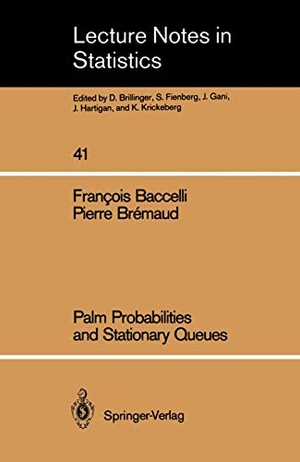Für statistische Zwecke und um bestmögliche Funktionalität zu bieten, speichert diese Website Cookies auf Ihrem Gerät. Das Speichern von Cookies kann in den Browser-Einstellungen deaktiviert werden. Wenn Sie die Website weiter nutzen, stimmen Sie der Verwendung von Cookies zu.
Cookie akzeptieren
Pierre Bremaud / Francois Baccelli
Palm Probabilities and Stationary Queues
- Springer New York
- 1987
- Taschenbuch
- 120 Seiten
- ISBN 9780387965147
Tables of Contents.- 1. Stationary point processes and Palm probabilities.- 1. Stationary marked point processes.- 1.1. The canonical space of point processes on IR.- 1.2. Stationary point processes.- 1.3. Stationary marked point processes.- 1.4. Two properties of stationary point processes.- 2. Intensity.- 2.1. Intensity of a stationary point process.- 2.2. Intensity measure of a stationary marked point process.- 3. Palm probability.- 3.1. Mecke¿ s definition.- 3.2. Invariance of the Palm probability.- 3.3. Campbell¿ s formula.- 3.4. The exchange formula (or cycle formula) and Wald¿ s equality.- 4. From Palm probability to stationary probability.- 4.1. The inversion formula.- 4.2. Feller¿ s paradox.- 4.3. The mean value formulae.-
Mehr
Weniger
zzgl. Versand
in Kürze